
The Yellow Bicycle
Suitable for: Key stage 1, Key stage 2
Curriculum topics: Diverse histories
Suggested inquiry questions: What it might be like to leave the country you grew up in? What does ‘home’ mean?
Potential activities: Make a Bibi doll; illustrate the suitcase
Welcome to the Time Travel Club’s activities to mark an event which happened in 1972 in Uganda, Africa. The leader of Uganda, President Idi Amin, told all the Asian people living there that they had to leave their homes forever. Over 28,000 people came to live and settle in the UK, making new lives for themselves.
To help you find out more, we have created a special video called ‘The Yellow Bicycle’. In this video Chandrika Joshi will tell you a story about what it was like to live through this time. The story is based on the experience of the Ugandan Asian people, but it will make you think what it might be like to leave the country you grew up in, journeys to new places and what ‘home’ means.
Watch Chandrika’s story, and afterwards you can take part in some creative activities to help you explore the themes from the video further.
This video is part of the British Ugandan Asians 50 project.
The Yellow Bicycle
Follow on document activity
Here is part of a document from the archives. Write down the answers or chat to someone at home:
- What can you see? (Tip: look everywhere on the document for as many things as you can spot)
- When do you think it was made?
- What type of document is it?
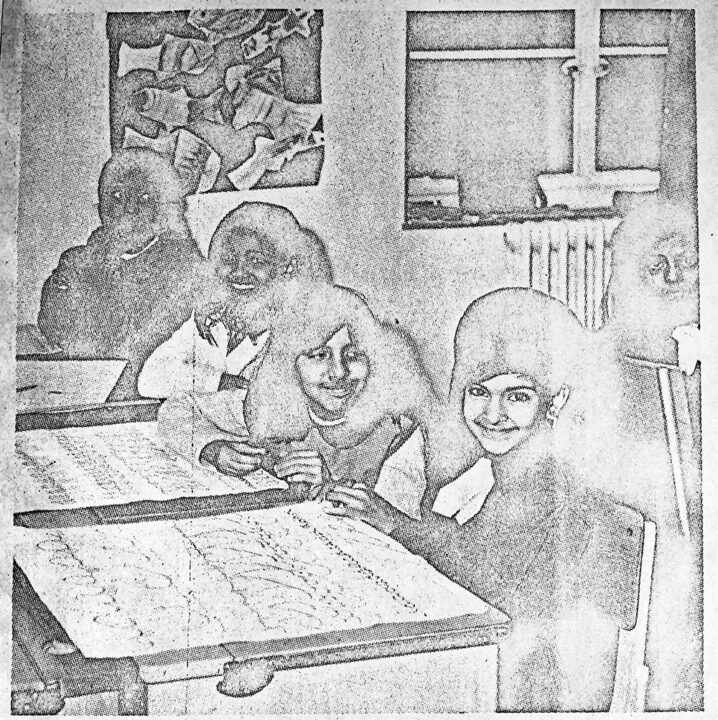
Document reveal
Scroll down to see the full document. Can you guess what type of document this is now? Think about where you might see a picture with a caption [description] underneath.
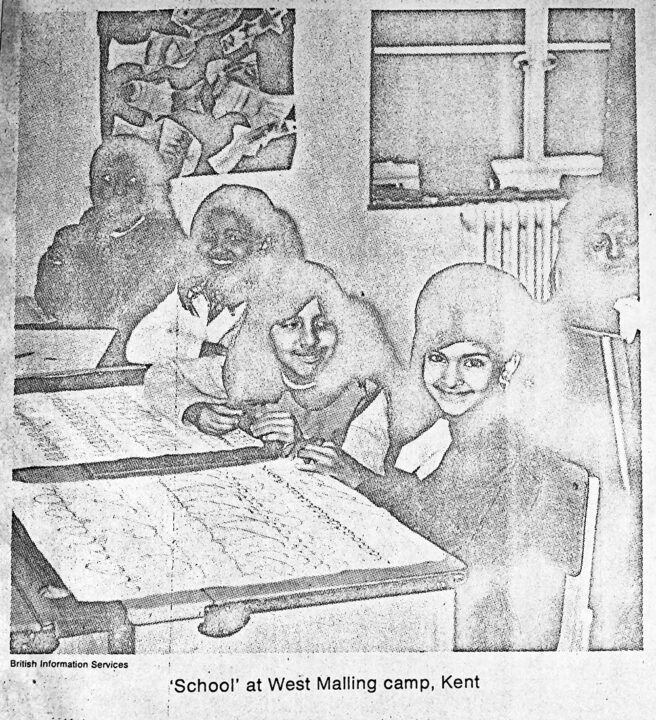
This document comes from a magazine article at the time. It was photocopied which is why the quality is not very good. The magazine was called The Christian Science Monitor, 3rd January 1973. It is in The National Archives, document reference: HO 289/90. The picture shows Ugandan Asian children at school in a resettlement camp in West Malling, Kent. Schools were set up in the camps to help the children.
Challenge – why are the children smiling at the camera?
Creative activities
Tasks
Make a Bibi Doll
A Bibi doll is a simple toy made from things found around the home. Chandrika talks about playing with one of them in the story.
You will need:
- A piece of fabric approximately 10 x 30-40cm
- A ball of toy stuffing or cotton wool
- A lollypop stick
- A piece of strong thread or wool about 20cm in length
- Felt tip pens
1. Lay the fabric out flat and place the ball of stuffing/cotton wool in the middle of the fabric
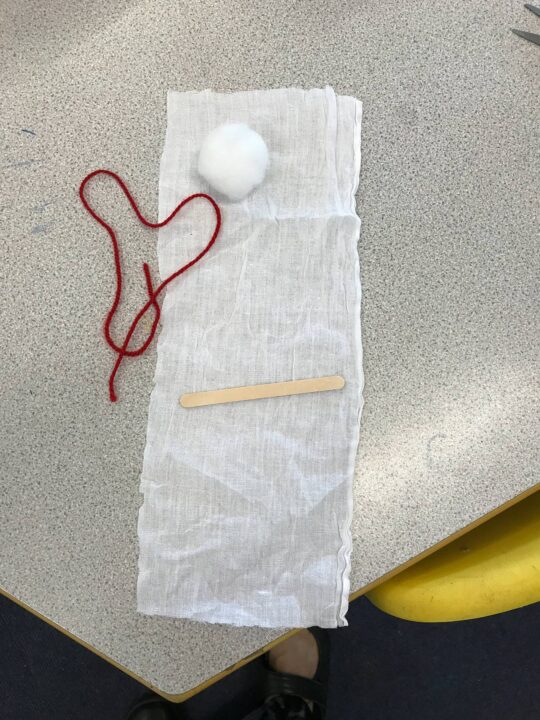
2. Bring the top half of the fabric over the ball so that the top and bottom edges meet
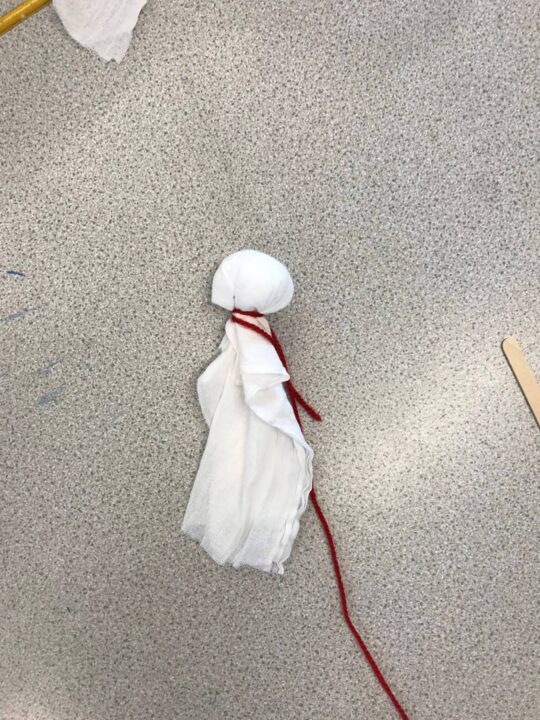
3. Tie the thread/wool around the bottom of the ball so that it gathers up, forming the shape of a head. Make sure you leave some spare thread free at both ends
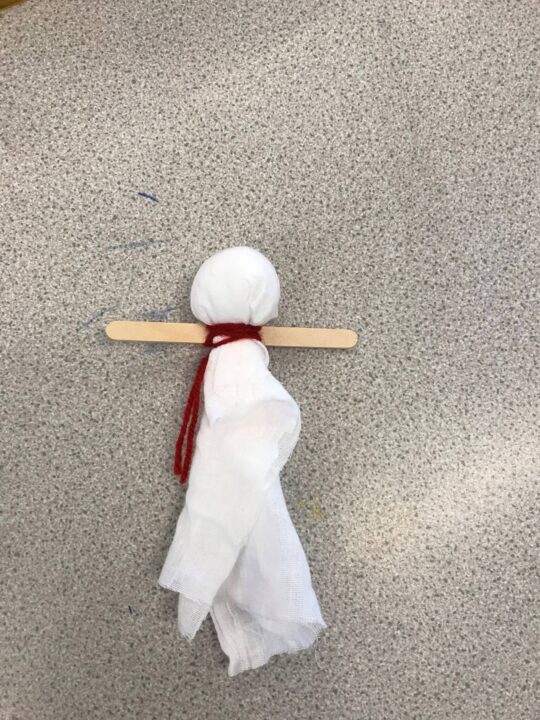
4. Put the lollypop stick behind the doll’s head, where the thread is tied. Then tie the lollypop stick to the doll using the spare thread. You could also use some PVA to secure the lollypop stick
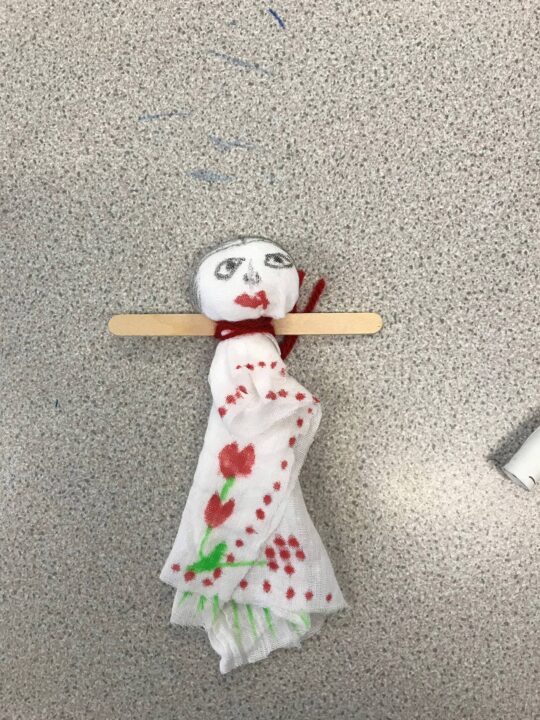
5. Now you can draw a face on your doll and decorate the skirt however you like!
Illustrate your own suitcase
Think about – what would young people/children who have had to leave their homes, want to take with them to remind themselves of home? These could be objects such as toys and clothes, or things such as their favourite food, smells and memories. Think about or write down as many as you can come up with. You can print off the outline of the suitcase or draw your own. Inside it, write or draw up to five images to represent the above.
Extension – write a sentence explaining why you have chosen these things.
Print off the outline of the suitcase

Back to top
Suitable for: Key stage 1, Key stage 2
Curriculum topics: Diverse histories
Suggested inquiry questions: What it might be like to leave the country you grew up in? What does ‘home’ mean?
Potential activities: Make a Bibi doll; illustrate the suitcase
 The National Archives
The National Archives






